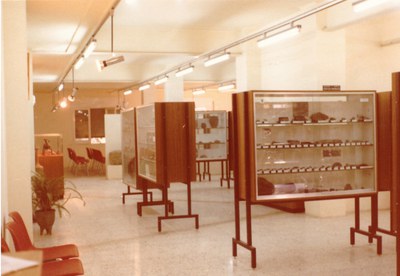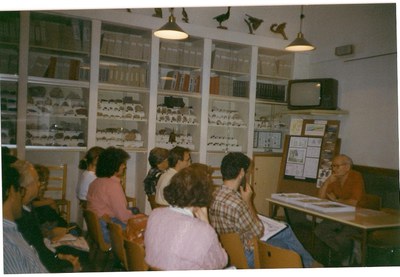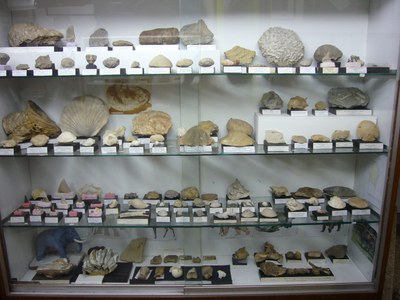History
When you refer to the Centre d'Estudis de la Natura del Barcelonès Nord (CENBN), you are not just talking about the cultural history of our city, you are talking about Science, Politics, Economics, Social Justice or Environmental claims.
The Centre was officially founded on 23 April 1985, but its true origins can be traced back to the early 1950s, when a small group of members of the Puigcastellar Excursionist Centre (CEP) decided to organize the Studies section (among others: Joan Vaello, Didac Miejimolle and Joan Vicente), subsequently followed by the Juvenile Group of Natural Sciences also in the CEP, between 1966 and 1969.
The activity of the founding group revolved around excavations in the Iberian settlement Puig Castellar, although some associates also conducted research in the world of paleontology which they published in scientific journals of the time.
The major turning point of this pioneering group in scientific research in our city takes place with the inauguration (not without some hitches), of the Museo Municipal Puig Castellar on 8 June 1974, on the ground floor premises of Mossèn Camil Rossell 75. The entity, dedicated primarily to the museum's exhibition of materials, consisted firstly of 22 glass displays devoted to natural sciences (Geology, Biology, Malacology, ..,) and another 16 dedicated to Archaeology (mainly with findings from the Iberian settlement of Puig Castellar.). At the time, it was considered one of the finest Natural Science museum exhibition halls in Catalonia.

Its closure in 1986 meant the transfer of all materials and the library to the new Torre Balldovina Museum following the agreement signed in October 1986. Ultimately, the opening of the new museum was held on 19 June 1987.
In light of the eminent dismantling of the Puig Castellar Municipal Museum, the team in charge decided to create a new entity that would keep the naturalistic principles alive. As such, the Centre d'Estudis de la Natura del Barcelonès Nord is established in 1985, the official address now becoming the Pyrenees street, where new materials, books, articles... that the group was collecting or producing would be stored from then on.
In 1985 the first issue of the new newsletter of the CENBN came out, and continues to be published up to the present day (more than thirty years later), with exchanges with more than 100 entities, museums and universities in the peninsula and Europe.
The search for new premises became more and more difficult due to the amount of materials that the collections had gathered, and the lack of economic resources (it was not very paramount, in those early democratic city halls, to invest in cultural issues).
It was the perseverance, the quality of its scientific work and the public pressures that eventually forced the City Council to grant premises located in C/ Sant Josep Oriol 5 in September 1994, which, although too small to house the collections, gave some breathing space to the components of the various sections of the Municipal Museum.

The Centre for Studies has always been present in numerous popular demands of the city, along with houses, neighborhood associations and environmental entities, it has collaborated with scientific entities, it has edited numerous research works in Paleontology, Geology, Botany, Malacology, ... It has provided all sorts of courses, workshops, conferences, talks, ... on its premises and in other entities.
After two years of illness, Joan Vicente’s passing in 2010 was a very severe blow to the association. Everything stopped, the regular members worked without enough time to open the premises, or to meet the many demands that came their way ... It seemed to be dying a slow death.
But his imprint that permeated everything caused the Center to resurface again, with the generous predisposition of Roser Vicente (daughter of Joan) who became president of the entity by the unanimous decision of the members.
Since the beginning of scientific activity (in the 1950s) more than 20,000 fossil samples, minerals, rocks, mollusks, plants, and so on, have been collected, determined, cataloged and stored. It maintains a bibliographic source of 15,000 publications related to the world of science. All this material is available to the public in a new database that can be accessed on the Internet.

Catalan translator: Merxe Vercher
